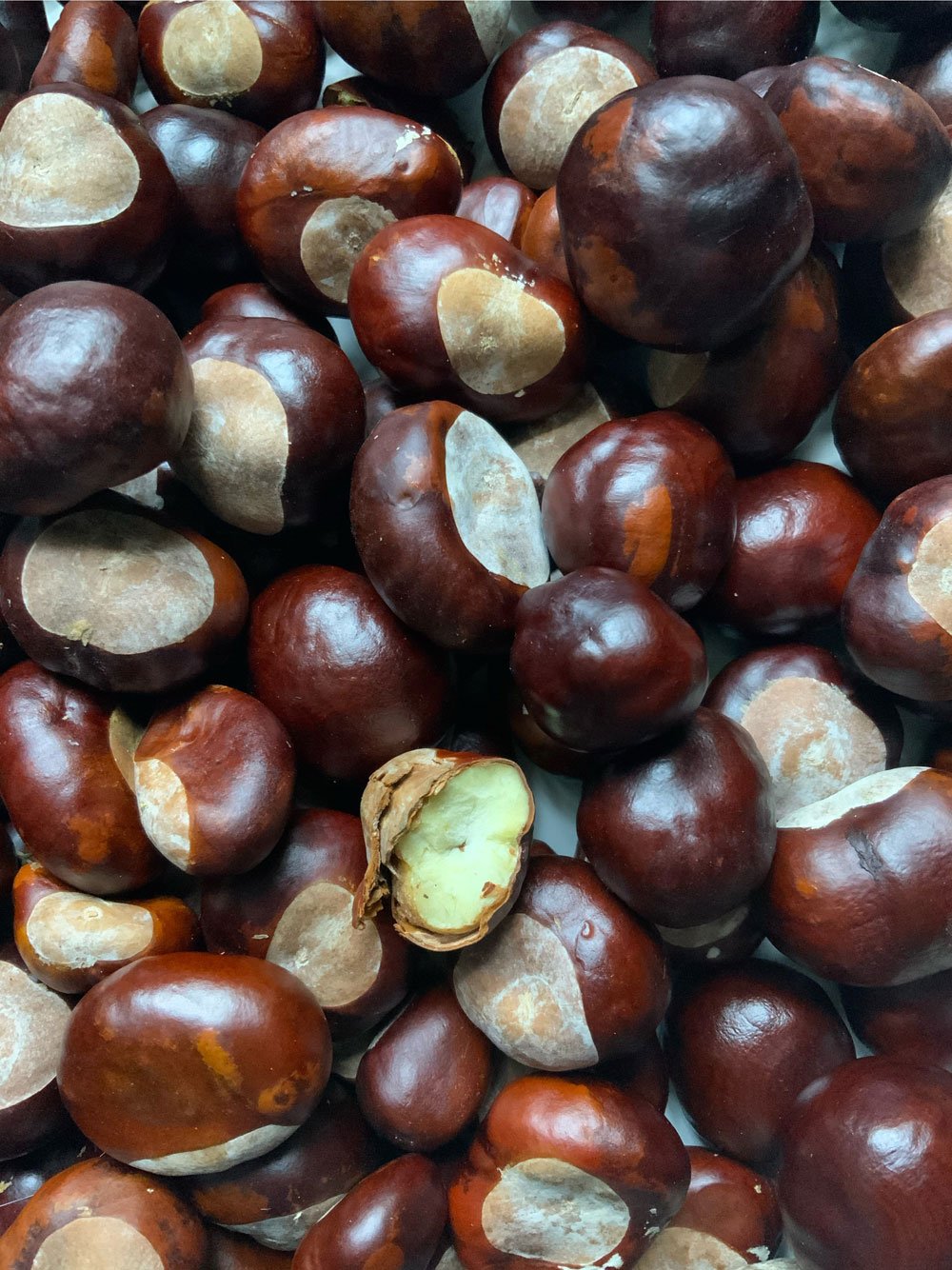Conkers (Horse Chestnuts)
I remember how exciting it felt to find the first conkers of the season.
You could find them gleaming, nestled into the crispy orange brown leaves. Little mahogany bubbles with contour swirls that were almost iridescent.
I remember searching for the perfect one. Thinking I’d found it, then seeing another perfect one and another and another.
Collecting them was for me the best bit of the whole of conker season.
But there was the tradition of playing an age old game with them.
My grandparents told me that they used to bake the conkers in the oven or boil them in vinegar to harden them. I tried both of these and I tried using the conkers just as I found them.
The trick was to find a way of drilling or hammering a hole through the fat middle of the conker with its pale beige-pink patch at the top. Then you cut a length of string about two feet or 60 cm long. Thread the string through the hole and tie a big triple knot at the end of the string to stop the conker falling off.
The game is between two people each with a conker on a string. You stand facing each other, at a convenient sociable distance, one holds their conker at arms length in front of them, keeping it very very still. The other player tries to swing their conker, aimed to hit their opponents’. Then the players swap roles. The aim is not only to hit the other conker, but to smash it to bits. There are regional variations to the game, but that is the basic outline.
There is a modern myth about playing conkers at school which seems to have stopped children from enjoying this free seasonal marker that generations before them have loved so much.
The story goes that children had been getting specks of shattered conkers in their eyes, so a headteacher had made the children wear googles and padded gloves while they were playing.
From this rumour it was a short step to schools all over Britain banning conkers.
The Health and Saftey Executive say that “realistically the risk from playing conkers is incredibly low and just not bothering about.”https://www.hse.gov.uk/myth/september.htm
Another bonus to conker season is that you can make your own laundry detergent.
We are very used to going and buying super dooper washing powders and liquids, so it seems unimaginable that a traditional natural home made recipe would work. But recently some people have switched from chemical products to using “soap nuts” which are flown half way across the world to us in the UK. However the creamy coloured nut inside conkers contain the same soap like substance, saponin, and many people say that they work every bit as well as a cheap environmentally friendly replacement for laundry detergents.
If you want to try this out you can find several different recipes on line, but basically it goes like this.
- Smash each conker into little chunks, then grind them in a blender until they are rough crumbs.
- Place them in a thin layer on a baking paper lined sheet, and bake them gently in the oven, until they are dry but preferably not burned.
- Let them cool and then store them in a not quite airtight container, (you don’t want them to sweat and get moist and go mouldy.)
- When you are ready to make up a batch of washing liquid, let a tablespoonful per load of washing seep in warm water for half an hour. When the water has turned milky pour it into a container through a sieve to get rid of the crumbs of chestnut. Use the liquid as you would use a washing liquid.if you want to you can add a few drops of essential oils to give it a fragrance, otherwise it has a very neutral smell.
So let’s make this autumn one where children are taught how to play conkers again by their grown ups, so that they get as excited by the new season as we used to. And try out a way of doing washing without expensive chemical products. A time to turn over new orange brown leaves perhaps.
Enjoy conker season.


